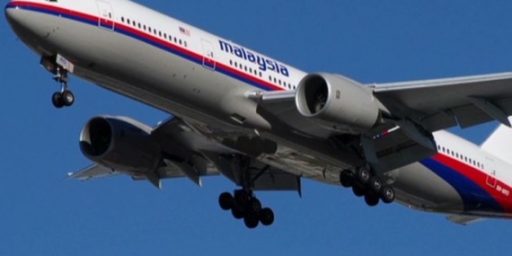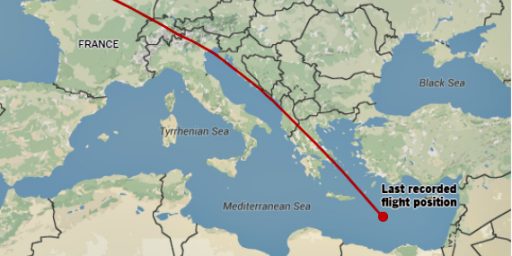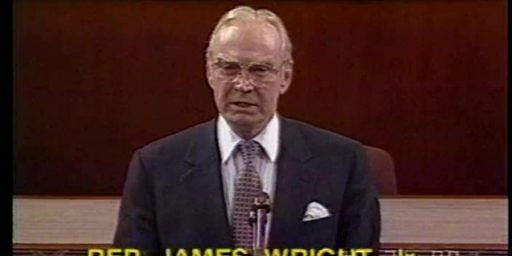THE WRIGHT BROTHERS: 100 YEARS LATER
Amusingly, we seem to be going in the wrong direction:
One-hundred years after the Wright brothers’ first flight, an attempt to re-create the moment failed Wednesday when a replica craft couldn’t get off the ground and sputtered into the mud.
The muslin-winged flyer dropped off the end of a wooden track and stopped dead in a muddy puddle. Pilot Kevin Kochersberger dropped his head in apparent chagrin and later laughed as the plane was hoisted back on the track.
The attempt had already been delayed by about three hours after a heavy downpour.
It was not immediately clear if the team would give the launch another try. Organizers took the plane back inside a tent pavilion for an inspection to see if they can make another try.
In a related story, Don Phillips says that automation has made aviation rather mundane.
A century after the Wright brothers launched the aviation era with a daring and wobbly 12-second flight over North Carolina, the work of a commercial pilot is, a lot of the time, about as exciting as that of a systems manager.
Pilots at the major airlines today are surrounded by computerized navigation and safety equipment that does much of their flying for them. They get loud warnings if their plane is on a collision course with another plane or the ground. Autopilot systems can follow a set course between continents and land on the center line of a runway thousands of miles away. Some of the best landings — the smooth ones that leave passengers applauding — are executed by “autoland.”
Much of a pilot’s time in the air is spent watching instruments, managing computers or just relaxing. On intercontinental flights that last as long as 20 hours, four pilots rotate with only one takeoff and one landing to hone their flying skills. So tranquil has a long-distance pilot’s life become that airline officials have spent considerable money and time figuring out ways to keep pilots awake, alert and engaged.
“I think a lot of them are bored to death,” said Curtis Graeber, Boeing’s chief engineer for human factors.
This is, of course, a good thing. As time moves on, we’re supposed to make things easier, no? Susanna Cornett’s trips to Kentucky are presumably not as arduous as those experience by Dan’l Boone, either. I certainly wouldn’t want to ride on an airline operated by two plucky bicycle mechanics who were still trying to work the bugs out of their plane!






On the other hand, it would obviate the need for in-flight movies. Action-adventure? Just watch ol’ Orville and Wilbur up there in the cockpit!
—